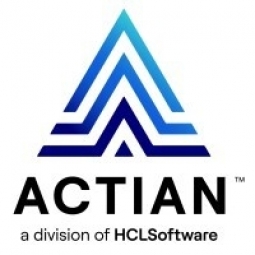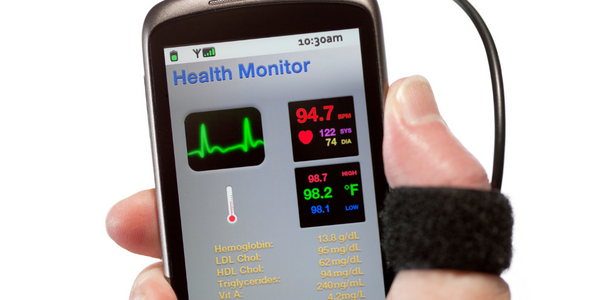Reducing Time to Insight from Days to Minutes: A Case Study on the University of Oxford's Clinical Trial Service Unit

Technology Category
- Application Infrastructure & Middleware - Database Management & Storage
- Infrastructure as a Service (IaaS) - Cloud Databases
Applicable Industries
- Cement
- Healthcare & Hospitals
Use Cases
- Construction Management
- Smart Campus
Services
- Hardware Design & Engineering Services
- Training
About The Customer
The Clinical Trial Service Unit and Epidemiological Studies Unit (CTSU) is part of the Nuffield Department of Population Health at the University of Oxford in the UK. CTSU aims to generate and disseminate reliable evidence from both observational epidemiology and randomized trials which can lead researchers to practicable methods of avoiding premature death and disability. Researchers at CTSU deal with huge volumes of information pertaining to the causes and treatments of chronic illnesses such as cancer, heart disease, and stroke, which collectively account for most adult deaths in the developed world. They are in search of greater insights into links between causes and diseases as well as prevention and treatment options.
The Challenge
The Clinical Trial Service Unit and Epidemiological Studies Unit (CTSU) at the University of Oxford was struggling with an aging legacy database infrastructure that could not handle the increasing volume of data nor run analytics against thousands of fields in multiple tables in a timely manner. The researchers at CTSU were dealing with vast amounts of information related to the causes and treatments of chronic illnesses such as cancer, heart disease, and stroke. They were seeking greater insights into links between causes and diseases as well as prevention and treatment options. However, extracting insights from the ever-increasing volume of data was becoming more and more difficult. Their ad hoc analytical queries could take multiple days to return a response. The researchers needed a faster, more cost-effective way to identify, manipulate, and extract the exact data they needed from the large pool of data they had accumulated, and gain insights from that data far faster than the legacy infrastructure could accommodate.
The Solution
CTSU deployed the Actian X enterprise-grade hybrid database for next-generation operational analytics. Actian X combines the industry-leading Actian Ingres transactional database with the Actian Vector analytic database to enable record-breaking analytics on large volumes of data. Actian X also bundles world-class integration and enterprise monitoring features as well as greater ease of administration than competitive products. This allows CTSU IT personnel to support the solution, even with the large volumes of data involved, with minimal engagement. CTSU had been using Actian Ingres to support other operations within the University for years, so they were already familiar with Actian. The addition of the vector processing capabilities of Actian X to existing routines for managing transaction processing technologies of Ingres required minimal training and added very little management overhead.
Operational Impact
Quantitative Benefit

Case Study missing?
Start adding your own!
Register with your work email and create a new case study profile for your business.
Related Case Studies.

Case Study
System 800xA at Indian Cement Plants
Chettinad Cement recognized that further efficiencies could be achieved in its cement manufacturing process. It looked to investing in comprehensive operational and control technologies to manage and derive productivity and energy efficiency gains from the assets on Line 2, their second plant in India.

Case Study
Hospital Inventory Management
The hospital supply chain team is responsible for ensuring that the right medical supplies are readily available to clinicians when and where needed, and to do so in the most efficient manner possible. However, many of the systems and processes in use at the cancer center for supply chain management were not best suited to support these goals. Barcoding technology, a commonly used method for inventory management of medical supplies, is labor intensive, time consuming, does not provide real-time visibility into inventory levels and can be prone to error. Consequently, the lack of accurate and real-time visibility into inventory levels across multiple supply rooms in multiple hospital facilities creates additional inefficiency in the system causing over-ordering, hoarding, and wasted supplies. Other sources of waste and cost were also identified as candidates for improvement. Existing systems and processes did not provide adequate security for high-cost inventory within the hospital, which was another driver of cost. A lack of visibility into expiration dates for supplies resulted in supplies being wasted due to past expiry dates. Storage of supplies was also a key consideration given the location of the cancer center’s facilities in a dense urban setting, where space is always at a premium. In order to address the challenges outlined above, the hospital sought a solution that would provide real-time inventory information with high levels of accuracy, reduce the level of manual effort required and enable data driven decision making to ensure that the right supplies were readily available to clinicians in the right location at the right time.

Case Study
Gas Pipeline Monitoring System for Hospitals
This system integrator focuses on providing centralized gas pipeline monitoring systems for hospitals. The service they provide makes it possible for hospitals to reduce both maintenance and labor costs. Since hospitals may not have an existing network suitable for this type of system, GPRS communication provides an easy and ready-to-use solution for remote, distributed monitoring systems System Requirements - GPRS communication - Seamless connection with SCADA software - Simple, front-end control capability - Expandable I/O channels - Combine AI, DI, and DO channels

Case Study
Driving Digital Transformations for Vitro Diagnostic Medical Devices
Diagnostic devices play a vital role in helping to improve healthcare delivery. In fact, an estimated 60 percent of the world’s medical decisions are made with support from in vitrodiagnostics (IVD) solutions, such as those provided by Roche Diagnostics, an industry leader. As the demand for medical diagnostic services grows rapidly in hospitals and clinics across China, so does the market for IVD solutions. In addition, the typically high cost of these diagnostic devices means that comprehensive post-sales services are needed. Wanteed to improve three portions of thr IVD:1. Remotely monitor and manage IVD devices as fixed assets.2. Optimizing device availability with predictive maintenance.3. Recommending the best IVD solution for a customer’s needs.

Case Study
HaemoCloud Global Blood Management System
1) Deliver a connected digital product system to protect and increase the differentiated value of Haemonetics blood and plasma solutions. 2) Improve patient outcomes by increasing the efficiency of blood supply flows. 3) Navigate and satisfy a complex web of global regulatory compliance requirements. 4) Reduce costly and labor-intensive maintenance procedures.







